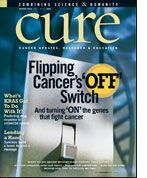The Invisible Caregiver
Advocating for yourself and your loved one.
A recent report by the AARP Public Policy Institute states that 34 million families in the United States provide care to loved ones—unpaid care valued at a stunning $375 billion.
The media talk about the stresses of caregiving, the challenges of being in the “sandwich generation,” and families’ willingness to step forward and care for loved ones. And yet, when the responsibility for taking care of someone else falls on your shoulders, it’s very likely you’ll feel isolated, stressed, inadequately trained for the job, and, yes, even invisible.
Families are a critical, if hidden, part of the U.S. health care system. Eighty percent of long-term care is provided at home, not in institutions. Medical advances, “quicker and sicker” discharge from hospitals, new developments in home care technology, and a shortage of trained aides have placed families in roles for which they are neither acknowledged nor prepared.
What can be done to support this essential band of volunteer health care workers so they can provide the best care at home to loved ones and take care of themselves?
While it is clear that patients must be assessed for their condition and treatment options, the conversation needs to include caregivers as part of the treatment team. There is growing momentum in health care and policy circles to institute formal assessment of family members and friends who are caring for adults who have disabling conditions, whether long-term or temporary. Even a simple question from the physician or discharge planner—“And how are you doing?”—starts the conversation about caregiver needs and acknowledges the important part families play in patient health.
Another aspect of the care equation is ensuring that families get proper training to perform the complex medical procedures that are sometimes asked of them. Wound care, injections, catheter care, and other procedures demand specific skills. Family caregivers cannot be expected to perform such sophisticated procedures without proper training.
To feel more comfortable in your caregiver role, you will want to seek out others who are in similar situations. Many hospitals, organizations, and websites offer in-person or online groups and chat rooms especially for caregivers. And learn to accept offers of help from friends and family.
In taking on this responsibility, you have become the advocate both for yourself and the person you’re caring for. You’re the squeaky wheel. You have the backing of some powerful organizations. You’ll find formal services through cancer-related or caregiver organizations. AARP, Family Caregiver Alliance, local seniors agencies, and even the American Red Cross offer a wealth of free caregiver information—all of which came about because families demanded it.
Public programs can also help you—some even offer financial aid or respite care, but you have to know where to look. The National Family Caregiver Support Program, administered by the U.S. Administration on Aging, offers a range of services through the National Association of Area Agencies on Aging (www.n4a.org) or the National Association of State Units on Aging (www.nasuad.org). Discharge planners or social workers may provide information for your area.
Again, the web is a great resource. Family Caregiver Alliance’s Family Care Navigator offers a quick way to start the search for state, national, and private support programs.
Finally, if time and energy allow, let your legislators know you need help, that you’re willing and able to be that essential part of the health care system, but you should not be expected to do it alone. You need and deserve information, training, help in the home, and financial assistance. The support programs that have come about in the past few years were initiated only when organizations and legislators heard their constituents’ voices, loud and clear.
—Bonnie Lawrence is communications manager at Family Caregiver Alliance and the National Center on Caregiving.
